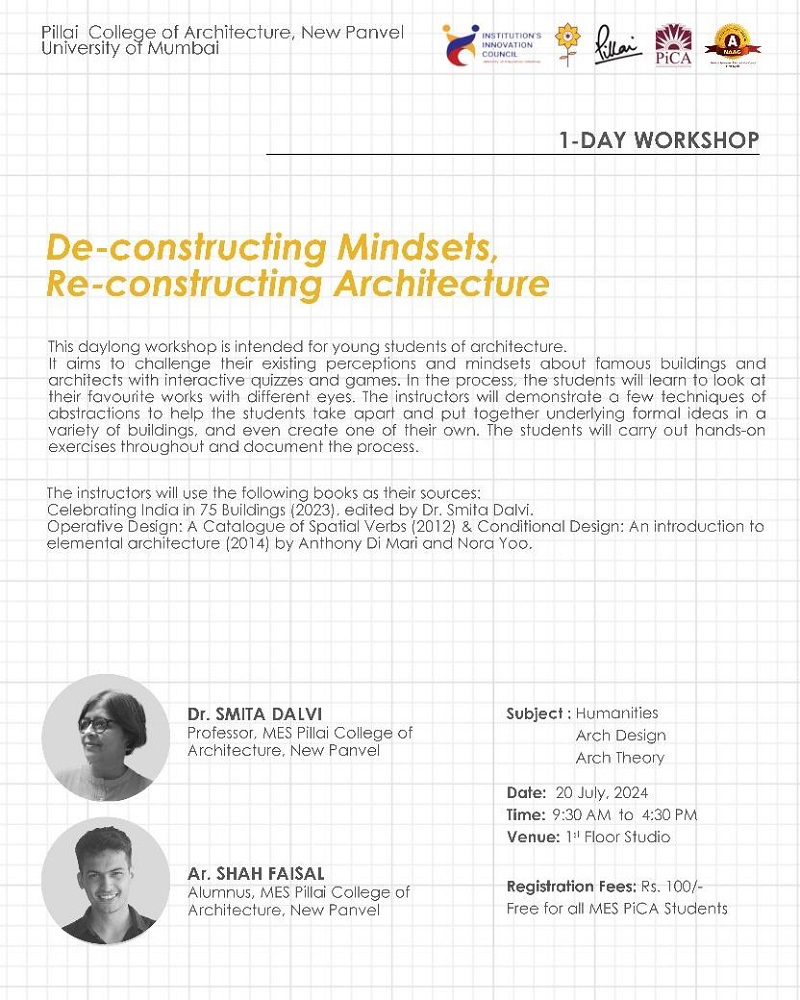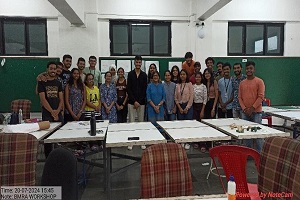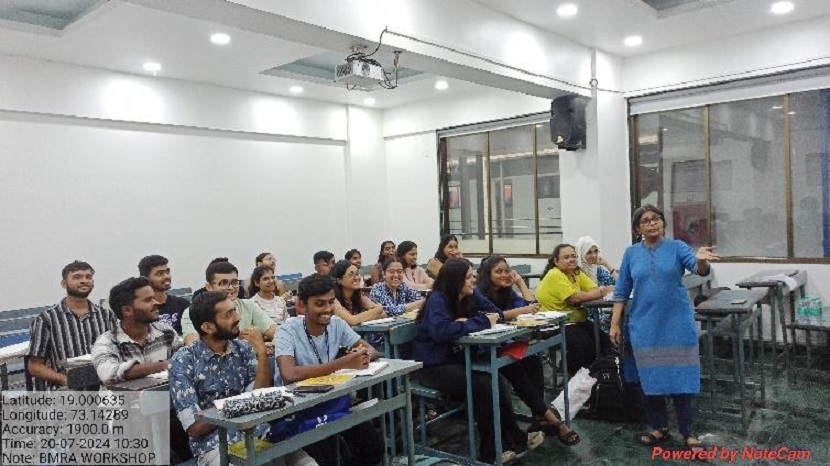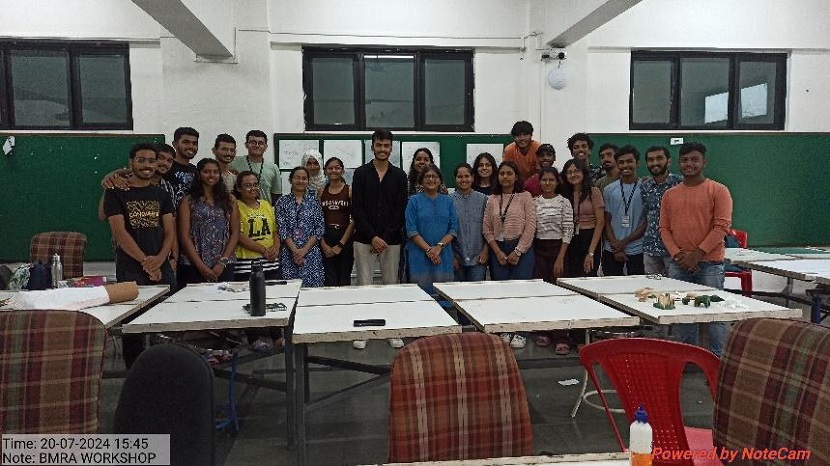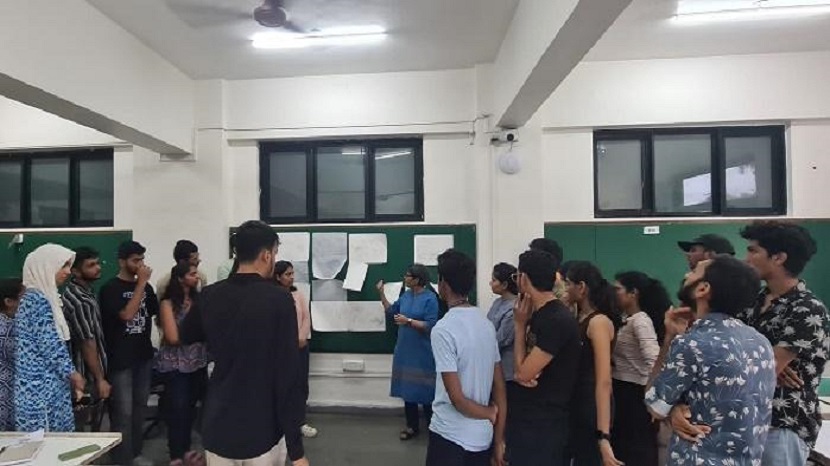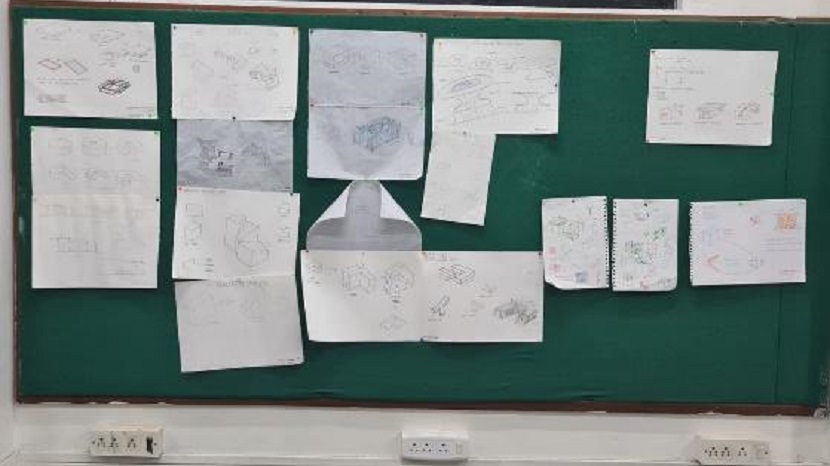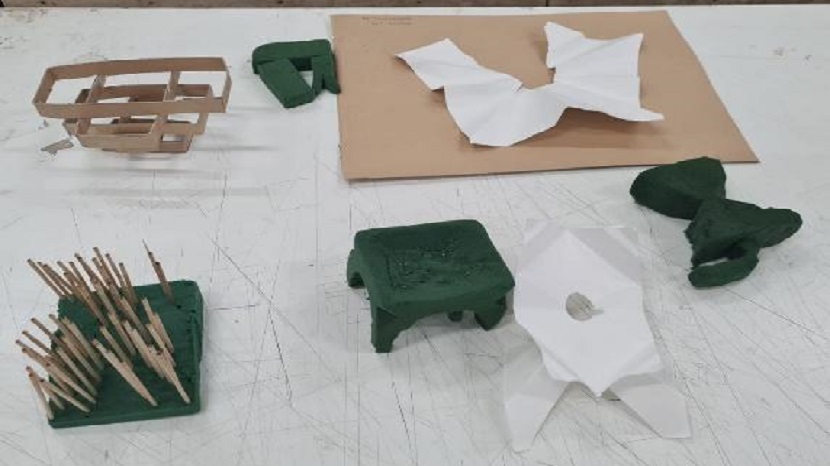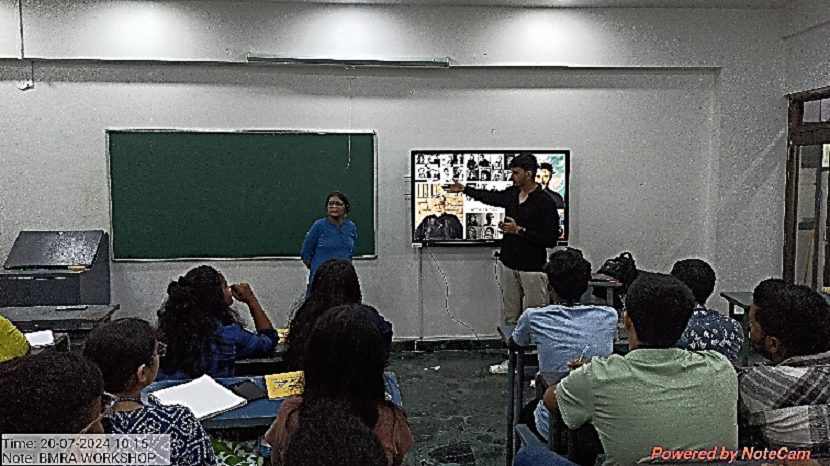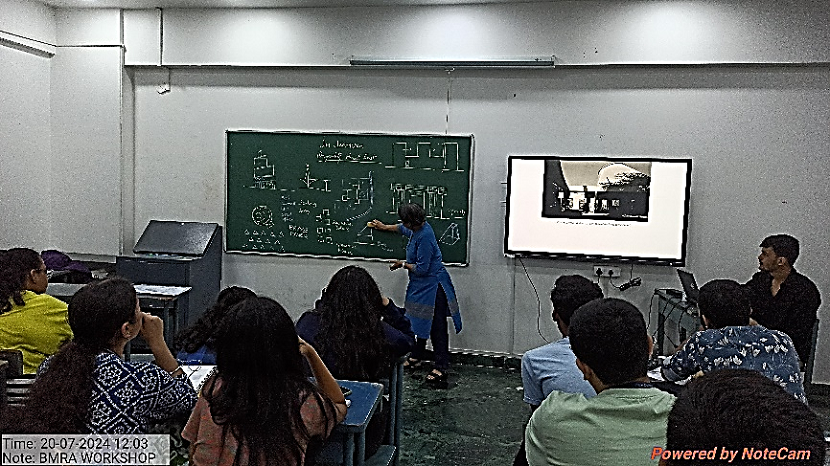| Title | De-constructing Mindsets, Re-constructing Architecture |
| Semester | III & V, B.Arch. Students |
| Resource Faculty | Dr. Smita Dalvi (In-house Faculty) Ar. Shah Faisal (Guest Faculty) |
| PiCA Faculty Co-ordinators | Prof. Smita Dalvi, Prof. Ajita Deodhar |
| Duration - Dates and Total Hours | 20th July, 2024, 9.30 a.m. to 4.30 p.m. |
| Total number of student participants | 26 Students out of 50 Registered. (Due to heavy rains and train service disruptions, many students could not attend) |
Biography of the Resource Faculty:
Dr. Smita Dalvi teaches architecture and aesthetics in Navi Mumbai and Mumbai. She is a Professor at MES Pillai College of Architecture, Panvel and the editor of Tekton – a scholarly journal of architecture published biannually. She has delivered several guest lectures in India and abroad on the topics of Indian history and urban heritage. She is the co-author of ‘Panvel: Great City, Fading Heritage’, and the editor of ‘Celebrating India in 75 Buildings’. This recent publication commemorates 75 years of India’s independence through a selection of 75 significant buildings from 1947-2022. An invaluable resource for students, teachers of architecture, and general readers, the book succinctly illustrates the stories behind each building to create a narrative of post-Independence India’s architectural evolution.
Ar. Shah Faisal recently graduated in architecture from Pillai College of Architecture. He has participated in several national and international competitions and won prizes in quite a few. He worked as a research assistant with Prof. Smita Dalvi for the book ‘Celebrating India in 75 Buildings’. He received an Honourable Mention (along with Smita Dalvi and Mustansir Dalvi) in the 10th Advanced Architecture Competition, organised by the Institute for Advanced Architecture of Catalonia (IaaC) that had, as its theme: ‘AI for the Built Environment’. He is passionate about architecture and teaching it. He has conducted a number of workshops for young architecture and design students as well as school students.
Objectives:
- To challenge the existing perceptions and mindsets about famous buildings and architects
- To learn to decipher underlying formal principles of buildings.
- To collate the learnings of Humanities, Architectural Theories and Architectural Design into an integrated manner.
Description:
This day-long workshop was specially curated for young students of architecture.
It aimed to challenge their existing perceptions and mindsets about famous buildings and architects with interactive quizzes and games. In the process, the students learnt to look at their favourite works with different eyes. The instructors demonstrated a few techniques of abstractions to help the students take apart and put together underlying formal ideas in a variety of buildings. Various examples were demonstrated on the blackboard by the instructors and participating students. These included recent buildings in India, Latin America, Japan and Africa, besides Eurocentric famous ones.
In the second half, students were asked to pick a few formal principles and operations and transform these formal concepts to design a pavilion for the Serpentine Gallery in London.
The Instructors used the following books as their sources:
Celebrating India in 75 Buildings (2023), edited by Dr. Smita Dalvi. Operative Design: A Catalogue of Spatial Verbs (2012) & Conditional Design: An introduction to elemental architecture (2014) by Anthony Di Mari and Nora Yoo.
Outcomes:
The workshop challenged prevailing notions about famous works and what is considered a good building. It made them think and taught a methodology to take apart and analyse formal and visual principles.
The workshop also taught a methodology to put together formal ideas to create their own designs for Serpentine Gallery pavilion 2025. A number of innovative and creative works were produced. These were exhibited towards the end of the workshop and collectively discussed.
A very fruitful horizontal integration was achieved of the courses in Humanities, Architectural theories and Architecture Design.
